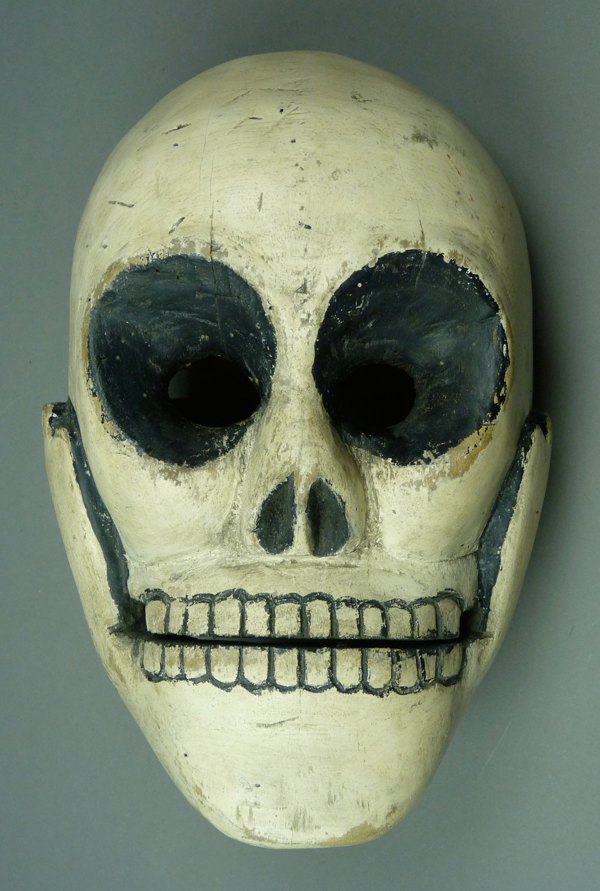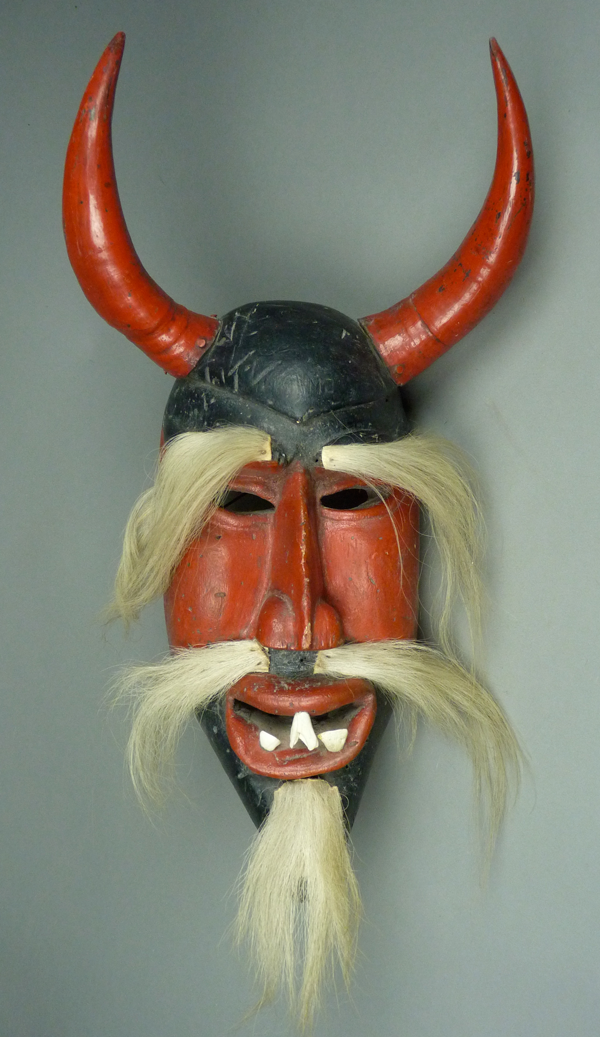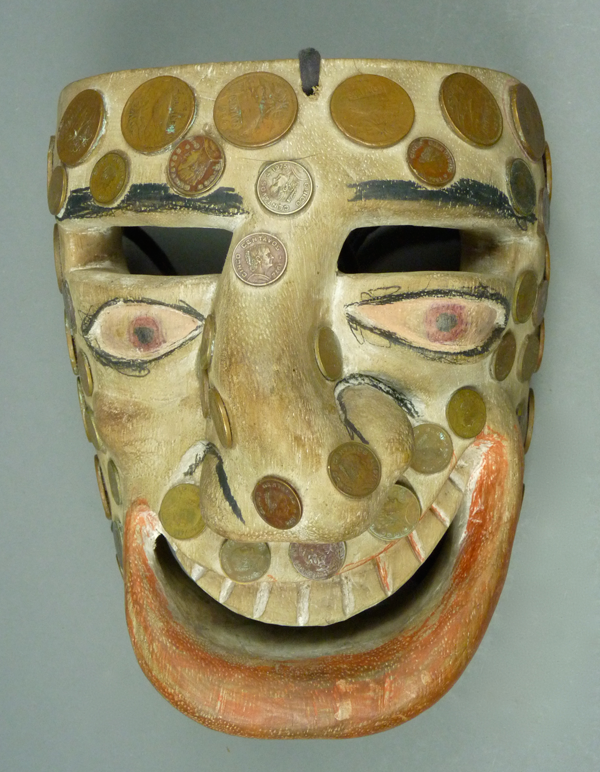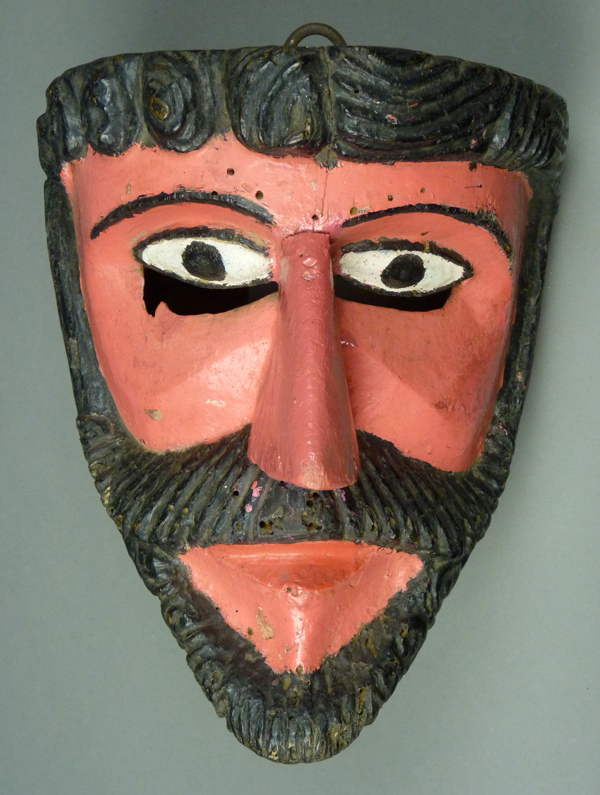Last week I showed masks associated with Holy Week in the Mexican state of Michoacán. Today I will follow up by presenting Fariseo masks from some of the other states of Mexico—Guanajuato, Jalisco, and Queretero.
As I previously explained, the characters who threaten Christ in these passion plays can go by a number of different names, including Fariseos, Judios, Judas dancers, Centurions, Robenos (Romans), and Soldados. In next week’s post I will discuss Centurians, Robenos, and unmasked Roman soldiers wearing tin helmets. Several posts will follow about the Judas dancers from Guerrero and San Luis Potosí to further explore this subject.
Today’s first mask is a Fariseo from the state of Jalisco. I obtained this mask from the collection of Robert Lauter in 1988. Gesso (plaster of paris) had been applied to form the hair and sideburns. In contrast, the eyes and the mustache were carved in relief. The chin was painted blue to indicate a “5 o:clock shadow,” a stylistic detail that one sees more typically in masks from the Mexican state of Chiapas and from Guatemala. This mask has marked patina, as if it is 50 or 75 years old, but it came with no documentation about its age.

This mask is 8¼ inches in height, 6¼ inches in width, and 3¾inches in depth.
Continue Reading →





